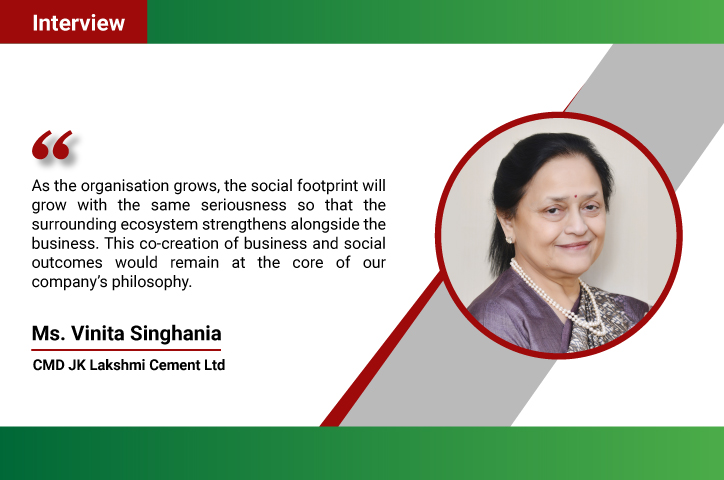For generations, the default mode of manufacturing came with an accepted byproduct: waste. Whether in the form of excess material, surplus inventory, or carbon-heavy logistics, inefficiency was built into the system. This is precisely the kind of structural challenge the sustainability sector has been working to address—and it’s here that additive manufacturing, or 3D printing, offers an important inflection point.
By creating objects layer by layer with precision, 3D printing minimizes material use, enables localized production, and redefines how supply chains function. Mr. Rahul Chandalia, Director of WOL3D and a leading figure in India’s 3D printing movement, has spent the last eight years translating this potential into practice. From developing eco-friendly filaments to building one of India’s most accessible 3D printing ecosystems, his work highlights how technological advancement can be harnessed to meet environmental goals.
In the following article, Mr. Chandalia breaks down the environmental promise of 3D printing—offering insights not only into how it reduces waste and emissions, but how it might reshape the very foundations of manufacturing for a more sustainable future.
Read the full article below.
Layer by Layer: The Eco-Friendly Promise of 3D Printed Goods
Additive manufacturing, more widely known as 3D printing, has rapidly transitioned from a prototyping tool to a cornerstone of industrial production. Unlike traditional manufacturing which often carves or moulds products from larger blocks of material, 3D printing builds objects layer by layer, using only what’s necessary. This fundamental shift in production methodology is not only changing how goods are made but also has significant implications for environmental sustainability.
Overview of 3D Printing and Its Sustainability Potential
Traditional manufacturing processes, such as machining and injection moulding, are notorious for their inefficiency and waste. They often generate substantial scrap material, require extensive supply chains, and consume large amounts of energy and water. In contrast, 3D printing’s additive approach allows for greater design flexibility and customization, while significantly reducing material waste. Recent studies show that the environmental impact of 3D printing can be up to 70% less than that of conventional manufacturing processes.
This efficiency directly supports global sustainability goals. By using only the required amount of raw material and enabling on-demand, localized production, 3D printing aligns with the United Nations’ Sustainable Development Goals (SDGs), particularly those focused on responsible consumption and production.
Material Efficiency: Minimizing Waste
One of the most significant environmental advantages of 3D printing is its ability to minimize material waste. Unlike subtractive methods, where excess is discarded, additive manufacturing deposits material precisely where needed. This approach leads to substantial cost savings and conserves valuable resources. In the construction industry, for example, the adoption of 3D printing technology could reduce energy supply and overall emissions by up to 5% in large-scale projects by 2025.
The industry is also seeing a surge in the use of recycled and biodegradable materials. Polylactic acid (PLA), a popular 3D printing material, is derived from renewable resources like corn and sugarcane, making it both biodegradable and low in greenhouse gas emissions during production. The shift toward spool-less or refillable filaments further reduces plastic waste and supports circular manufacturing models.
Energy Consumption: Innovations and Trade-Offs
While 3D printing is material-efficient, energy consumption remains a complex issue. Some 3D printing processes, especially those involving high-powered lasers or heat, can be energy-intensive. However, the industry is making strides in energy efficiency. Newer technologies, such as low-temperature printing and solar-powered printers, are helping to reduce the overall energy footprint of additive manufacturing.
Life-cycle assessments (LCAs) indicate that, in many cases, the long-term energy savings from reduced material waste and localized production outweigh the initial energy costs of 3D printing. For instance, the ability to manufacture goods closer to the point of use reduces transportation-related emissions, which are a significant contributor to industrial carbon footprints.
Reduced Carbon Footprint: Localized and On-Demand Production
One of the most transformative aspects of 3D printing is its potential to decentralize production. By enabling localized, on-demand manufacturing, 3D printing reduces the need for extensive logistics and warehousing. This shift can substantially lower greenhouse gas emissions associated with transportation and storage. In construction, for example, 3D printing not only cuts material waste but also reduces the carbon footprint of building projects, especially when recycled materials are used.
A study comparing the environmental impact of 3D-printed and traditionally built homes found that 3D printing led to significant reductions in both material waste and emissions, particularly when local, recycled materials were employed.
Industry Challenges and Innovations
Despite its promise, 3D printing faces challenges that must be addressed to fully realize its environmental benefits. High energy consumption for certain processes and limitations in available sustainable materials remain hurdles. However, the industry is responding with innovations in biodegradable resins, closed-loop recycling systems, and AI-driven design optimization that minimizes both material and energy use.
Future Outlook: Toward Sustainable Manufacturing
The future of 3D printing is closely tied to ongoing advancements in material science, process efficiency, and integration with traditional manufacturing workflows. As the technology matures, it is expected to play an increasingly vital role in sustainable production across sectors such as construction, healthcare, and consumer goods. The convergence of technical innovation and environmental consciousness is positioning additive manufacturing as a transformative force in the global effort to reduce industrial waste, emissions, and resource consumption.
In summary, 3D printing is not just a technological innovation—it is a pathway to more sustainable, responsible, and efficient manufacturing. As the industry continues to evolve, its environmental implications will remain central to shaping a greener industrial future.
















.jpg)




